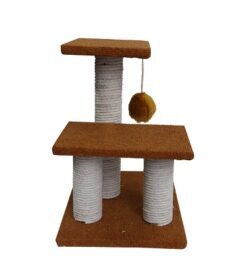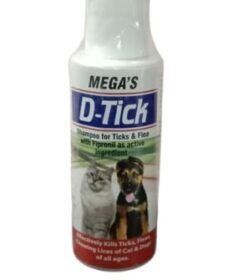-
×
 3 Pole Scratching Post For Cats ₨1,800.00
3 Pole Scratching Post For Cats ₨1,800.00 -
×
 D Tick Shampoo Tick & Flea For Dogs and Cats ₨750.00
D Tick Shampoo Tick & Flea For Dogs and Cats ₨750.00
Cat Health
How to Keep Your Cat Warm in Winter: Essential Tips for Pet Owners
As winter approaches, always see that your cat is warm and comfortable. Cats, though as furry as they can be, will still feel the slight chill as in our case. Giving attention to your cat’s comfort during winter is paramount to its health and well-being. Here are some nifty tips on keeping your feline warm during the chilly season.
Understanding Your Cat’s Needs
Cats require different temperatures for warmth and comfort, especially over the winter period. While some breeds, like Maine Coons or Norwegian Forest Cats are better suited for cold climates with thick fur, others may come a cropper.
Your cat’s age, health, and breed will all come into consideration in deciding how to make sure your cat stays warm.
Making It Cozy
- Warm Bed Areas: One of the easiest ways to keep your cat warm is through provision of a cozy sleeping area. Cats prefer warm spots: you could consider the following:
- Cat Beds: Invest in an insulated, soft cat bed. You could also look for beds designed with heating elements specifically tailored for use by pets and position them in warm, non-draft areas.
- Blankets: Give your cat a few blankets to snuggle under. Cats are burrowing animals, so it feels warm in those blankets.
- Safe Spaces: Make sure you provide your cat with a safe, cozy place to hide. Cats feel safer and warmer in enclosed spaces or small places. You can even use a box of blankets.
Thermal Zone Modulation of Your House
- Thermostat Control: Besides warming it up, keeping your house warm is vital to your cat’s health:
- Heating within the Home Maintain indoor temperatures pleasant in the 68°F to 72°F (20°C to 22°C) range. In centrally heated buildings, all rooms must be warm.
- Draft-proofing: This is likely to be around the windows and doorway hence checks for any crevices that cold air could possibly penetrate through. For it to from leaking into your house, use weather-stripping or draught stoppers.
Supplemental Warmth
- Heating Pads: You can use a pet-safe heating pad. These can be inserted into your cat’s bed for subtle warmth. Just make sure it’s on a low setting to avoid overheating.
- Sunlight Heating: Cats love to soak up the sun. Leave your curtains open and let some sunlight in to create a warm bed for your cat.
Read More: Top Reasons Why Hair Loss In Cat Actually Occurs
Dress Your Cat
- Cat Sweaters and Coats: Short-haired or older cats can be dressed in a sweater or coat:
- Pet Attire: There are many stylish and comfortable sweaters out there that you can get for your cat. Make sure the clothing fits them well and will not hinder them or cause your cat discomfort.
- Observation: Always monitor your cat when it’s dressed so as not to cause it discomfort and you could be able to ascertain if it’s safe.
Stimulation of Activity
- Playing and Exercising: Maintain your cat active as this will enable your cat to develop body heat:
- Interactive Toys: Provide toys that encourage movement like feather wands or laser pointers. Playing time can also ensure that your cat stays warm and intellectually stimulated.
- Indoor Climbing: You may put up some climbing fabrics such as the cat trees or the shelves within the house through which they get to exercise and warm themselves up.
Nutrition and Hydration
- Heating through Nutrition: Proper diet will ensure that your cat stays warm and this he or she has normal body temperature.
- Healthy diet: Try and ensure that the cat takes balanced diet so that they can be able to get all the nutrients. Ask your vet about feed that is suitable for your cat.
- Water: Fresh clean water should always be provided. Your cat may refuse to drink cold water in winter. It’s appropriate using a warm bowl such that the water in it is pleasant for your cat to drink.
Pet Grooming
- Hair Care: It is keeping the hair coat of the cat well groomed. That way, the body will be able to let the natural dissipation of heat out from the body and then letting that temperature stabilize in the body.
- Brushing: If brushing is done regularly, it allows for ample time to remove dead hair and debris by making your coat healthy enough to keep you warm.
- Bathing: Do not bath them too often in the winters as this would mean stripping off the oils from their coats and it would not be able to keep warm.
Health Check
Veterinary visits: Regular health checks are of paramount importance, especially during winters:
Senior cats: Older cats tend to feel the cold more intensely, thus it is very important to keep track of their health conditions and when they get uncomfortable.
Warning Symptoms of Illness or Discomfort: Watch for signs that would signify illness or discomfort. Cats could be symptomatic by shivering, becoming lethargic, or wanting to eat very little. This is a warning sign you must get vet help sooner rather than later if any threatening signs occur.
Conclusion
One would need to make sure the kitty was warm during winter. Creation of warmth, optimization of temperatures in homes, and giving extra warmth to them would assist your feline friend in thriving in the cold. Proper grooming and monitoring would enable your cat to stay happy and healthy throughout the season. These tips will help you maintain that warm, loving home for your cat to stay cozy through winter.
FAQs
How Do I know if My Cat Is Cold?
Some other cold-dependent signs in cats include shivering, seeking a warm spot, curling up tight, and even reduced activity. Should your cat be experiencing any of these symptoms, then you will need to go the extra mile to provide warmth.
Is it safe for my cat to go outside in winter?
This simply depends on how tolerant your cat is about the cold. If they are animals that go out a lot, limit the time outside when extremely cold. Always watch over them and ensure that there’s a warm spot for them to return to.
What if my cat doesn’t want to wear clothes?
Some cats do not tolerate clothes at all. In case your cat appears uncomfortable in such clothes, it is better not to force them. Instead, provide a warm environment and comfortable bedding.

 3 Pole Scratching Post For Cats
3 Pole Scratching Post For Cats  D Tick Shampoo Tick & Flea For Dogs and Cats
D Tick Shampoo Tick & Flea For Dogs and Cats 